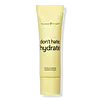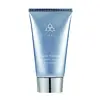What's inside
What's inside
 Key Ingredients
Key Ingredients

 Benefits
Benefits

 Concerns
Concerns

 Ingredients Side-by-side
Ingredients Side-by-side

Water
Skin ConditioningButylene Glycol
HumectantGlycerin
HumectantDimethicone/Vinyl Dimethicone Crosspolymer
Skin ConditioningDimethicone
EmollientHamamelis Virginiana Leaf Extract
Skin ConditioningPistacia Lentiscus Gum
MaskingNylon-12
Polysorbate 20
EmulsifyingPhenoxyethanol
PreservativeCarbomer
Emulsion StabilisingDimethicone Crosspolymer
Emulsion StabilisingHydroxyacetophenone
AntioxidantSodium Polyacrylate Starch
AbsorbentCaprylic/Capric Triglyceride
MaskingMethyl Trimethicone
Skin ConditioningSodium Hydroxide
BufferingHydrogenated Lecithin
EmulsifyingEthylhexylglycerin
Skin ConditioningSodium Hyaluronate
HumectantPhenethyl Alcohol
MaskingAroma
Saccharide Isomerate
HumectantSodium Carbonate
BufferingLimonene
PerfumingLinalool
PerfumingCitral
PerfumingPolyphosphorylcholine Glycol Acrylate
Geraniol
PerfumingCI 16035
Cosmetic ColorantWater, Butylene Glycol, Glycerin, Dimethicone/Vinyl Dimethicone Crosspolymer, Dimethicone, Hamamelis Virginiana Leaf Extract, Pistacia Lentiscus Gum, Nylon-12, Polysorbate 20, Phenoxyethanol, Carbomer, Dimethicone Crosspolymer, Hydroxyacetophenone, Sodium Polyacrylate Starch, Caprylic/Capric Triglyceride, Methyl Trimethicone, Sodium Hydroxide, Hydrogenated Lecithin, Ethylhexylglycerin, Sodium Hyaluronate, Phenethyl Alcohol, Aroma, Saccharide Isomerate, Sodium Carbonate, Limonene, Linalool, Citral, Polyphosphorylcholine Glycol Acrylate, Geraniol, CI 16035
Water
Skin ConditioningButylene Glycol
HumectantGlycerin
HumectantDimethicone/Vinyl Dimethicone Crosspolymer
Skin ConditioningDimethicone
EmollientNylon-12
Carbomer
Emulsion Stabilising1,2-Hexanediol
Skin ConditioningCaprylyl Glycol
EmollientDimethicone Crosspolymer
Emulsion StabilisingHydroxyacetophenone
AntioxidantSodium Polyacrylate Starch
AbsorbentCaprylic/Capric Triglyceride
MaskingMethyl Trimethicone
Skin ConditioningSodium Hydroxide
BufferingHydrogenated Lecithin
EmulsifyingMaltodextrin
AbsorbentSodium Hyaluronate
HumectantPistacia Lentiscus Gum
MaskingPhenethyl Alcohol
MaskingSodium Carbonate
BufferingEthylhexylglycerin
Skin ConditioningHamamelis Virginiana Leaf Extract
Skin ConditioningPolyphosphorylcholine Glycol Acrylate
Water, Butylene Glycol, Glycerin, Dimethicone/Vinyl Dimethicone Crosspolymer, Dimethicone, Nylon-12, Carbomer, 1,2-Hexanediol, Caprylyl Glycol, Dimethicone Crosspolymer, Hydroxyacetophenone, Sodium Polyacrylate Starch, Caprylic/Capric Triglyceride, Methyl Trimethicone, Sodium Hydroxide, Hydrogenated Lecithin, Maltodextrin, Sodium Hyaluronate, Pistacia Lentiscus Gum, Phenethyl Alcohol, Sodium Carbonate, Ethylhexylglycerin, Hamamelis Virginiana Leaf Extract, Polyphosphorylcholine Glycol Acrylate
Ingredients Explained
These ingredients are found in both products.
Ingredients higher up in an ingredient list are typically present in a larger amount.
Butylene Glycol (or BG) is used within cosmetic products for a few different reasons:
Overall, Butylene Glycol is a safe and well-rounded ingredient that works well with other ingredients.
Though this ingredient works well with most skin types, some people with sensitive skin may experience a reaction such as allergic rashes, closed comedones, or itchiness.
Learn more about Butylene GlycolThis ingredient is an emollient, solvent, and texture enhancer. It is considered a skin-softener by helping the skin prevent moisture loss.
It helps thicken a product's formula and makes it easier to spread by dissolving clumping compounds.
Caprylic Triglyceride is made by combining glycerin with coconut oil, forming a clear liquid.
While there is an assumption Caprylic Triglyceride can clog pores due to it being derived from coconut oil, there is no research supporting this.
Learn more about Caprylic/Capric TriglycerideCarbomer is a polymer of acrylic acid. Its main role is to create a gel consistency.
A high amount of carbomer can cause pilling or balling up of products. Don't worry, most products contain 1% or less of carbomer.
Dimethicone is a type of synthetic silicone created from natural materials such as quartz.
What it does:
Dimethicone comes in different viscosities:
Depending on the viscosity, dimethicone has different properties.
Ingredients lists don't always show which type is used, so we recommend reaching out to the brand if you have questions about the viscosity.
This ingredient is unlikely to cause irritation because it does not get absorbed into skin. However, people with silicone allergies should be careful about using this ingredient.
Note: Dimethicone may contribute to pilling. This is because it is not oil or water soluble, so pilling may occur when layered with products. When mixed with heavy oils in a formula, the outcome is also quite greasy.
Learn more about DimethiconeDimethicone Crosspolymer is a silicone created by modifying dimethicone with hydrocarbon side chains. Due to its large size, it does not penetrate skin. It is considered non-occlusive.
Dimethicone Crosspolymer is used to stabilize and thicken products. It also helps give products a silky feel.
This ingredient is a silicone used to improve the texture of products and absorb oil. It does not get absorbed into the skin.
Like other silicones, Dimethicone/Vinyl Dimethicone Crosspolymer helps condition the skin by creating a barrier. In this sense, it can act as an emollient and trap moisture in.
This ingredient is a type of elastomer.
Learn more about Dimethicone/Vinyl Dimethicone CrosspolymerEthylhexylglycerin (we can't pronounce this either) is commonly used as a preservative and skin softener. It is derived from glyceryl.
You might see Ethylhexylglycerin often paired with other preservatives such as phenoxyethanol. Ethylhexylglycerin has been found to increase the effectiveness of these other preservatives.
Glycerin is already naturally found in your skin. It helps moisturize and protect your skin.
A study from 2016 found glycerin to be more effective as a humectant than AHAs and hyaluronic acid.
As a humectant, it helps the skin stay hydrated by pulling moisture to your skin. The low molecular weight of glycerin allows it to pull moisture into the deeper layers of your skin.
Hydrated skin improves your skin barrier; Your skin barrier helps protect against irritants and bacteria.
Glycerin has also been found to have antimicrobial and antiviral properties. Due to these properties, glycerin is often used in wound and burn treatments.
In cosmetics, glycerin is usually derived from plants such as soybean or palm. However, it can also be sourced from animals, such as tallow or animal fat.
This ingredient is organic, colorless, odorless, and non-toxic.
Glycerin is the name for this ingredient in American English. British English uses Glycerol/Glycerine.
Learn more about GlycerinHamamelis Virginiana Leaf Extract comes from the witch hazel plant.
Witch Hazel is an astringent, anti-inflammatory, antioxidant, and antibacterial ingredient.
The tannin in witch hazel has a drying effect when used on skin and constricts proteins. This helps minimize the look of large pores. The presence of tannins and fragrance may be sensitizing.
The catechins in witch hazel have anti-inflammatory properties while the gallic acid is antibacterial.
Indigenous groups have used witch hazel to help treat inflammation, which was then used by early settlers to North America.
Learn more about Hamamelis Virginiana Leaf ExtractHydrogenated Lecithin is created from the hydrogenation of lecithin (a group of phospholipids). Hydrogenation is a chemical reaction between hydrogen and another element.
This ingredient is an emollient and emulsifier. As an emollient, it helps soften skin by trapping moisture within. As an emulsifier, it prevents oil and water ingredients from separating.
Hydroxyacetophenone is antioxidant with skin conditioning and soothing properties. It also boosts the efficiency of preservatives.
This ingredient is not irritating or sensitizing.
Methyl Trimethicone is a type of silicone. It is a solvent and emulsifier.
Solvents are used to keep ingredients together in a product. They can help dissolve ingredients to stable bases or help evenly distribute ingredients throughout the product.
Emulsifiers help stabilize a product. It does this by preventing certain ingredients from separating.
Methyl Trimethicone does not get absorbed into the skin.
Learn more about Methyl TrimethiconeNylon-12 is a polymer. It is derived from 12-aminododecanoic acid, an omega-amino fatty acid
According to a manufacturer, it is a talc substitute. Like talc, nylon-12 gives products a satin feel. The manufacturer also claims this ingredients does not block pores and has moderate oil absorption.
This ingredient may not be reef-safe.
Learn more about Nylon-12Phenethyl Alcohol is a colorless and aromatic alohol. It is naturally occuring in essential oils.
The scent of this ingredient is floral and often compared to rose.
Like other alcohols, this ingredient helps prevent the growth of bacteria. However, its main purpose is to impact a fragrance.
Learn more about Phenethyl AlcoholThis ingredient is also known as mustic gum and from a tree native to the Mediterranean Basin.
It has fragrance and masking properties.
Fun fact: This ingredient has been used as chewing gum for at least 2,400 years.
Learn more about Pistacia Lentiscus GumWe don't have a description for Polyphosphorylcholine Glycol Acrylate yet.
We don't have a description for Sodium Carbonate yet.
Sodium Hyaluronate is hyaluronic acid's salt form. It is commonly derived from the sodium salt of hyaluronic acid.
Like hyaluronic acid, it is great at holding water and acts as a humectant. This makes it a great skin hydrating ingredient.
Sodium Hyaluronate is naturally occurring in our bodies and is mostly found in eye fluid and joints.
These are some other common types of Hyaluronic Acid:
Learn more about Sodium HyaluronateSodium Hydroxide is also known as lye or caustic soda. It is used to adjust the pH of products; many ingredients require a specific pH to be effective.
In small amounts, sodium hydroxide is considered safe to use. However, large amounts may cause chemical burns due to its high alkaline.
Your skin has a natural pH and acid mantle. This acid mantle helps prevent harmful bacteria from breaking through. The acid mantle also helps keep your skin hydrated.
"Alkaline" refers to a high pH level. A low pH level would be considered acidic.
Learn more about Sodium HydroxideWe don't have a description for Sodium Polyacrylate Starch yet.
Water. It's the most common cosmetic ingredient of all. You'll usually see it at the top of ingredient lists, meaning that it makes up the largest part of the product.
So why is it so popular? Water most often acts as a solvent - this means that it helps dissolve other ingredients into the formulation.
You'll also recognize water as that liquid we all need to stay alive. If you see this, drink a glass of water. Stay hydrated!
Learn more about Water